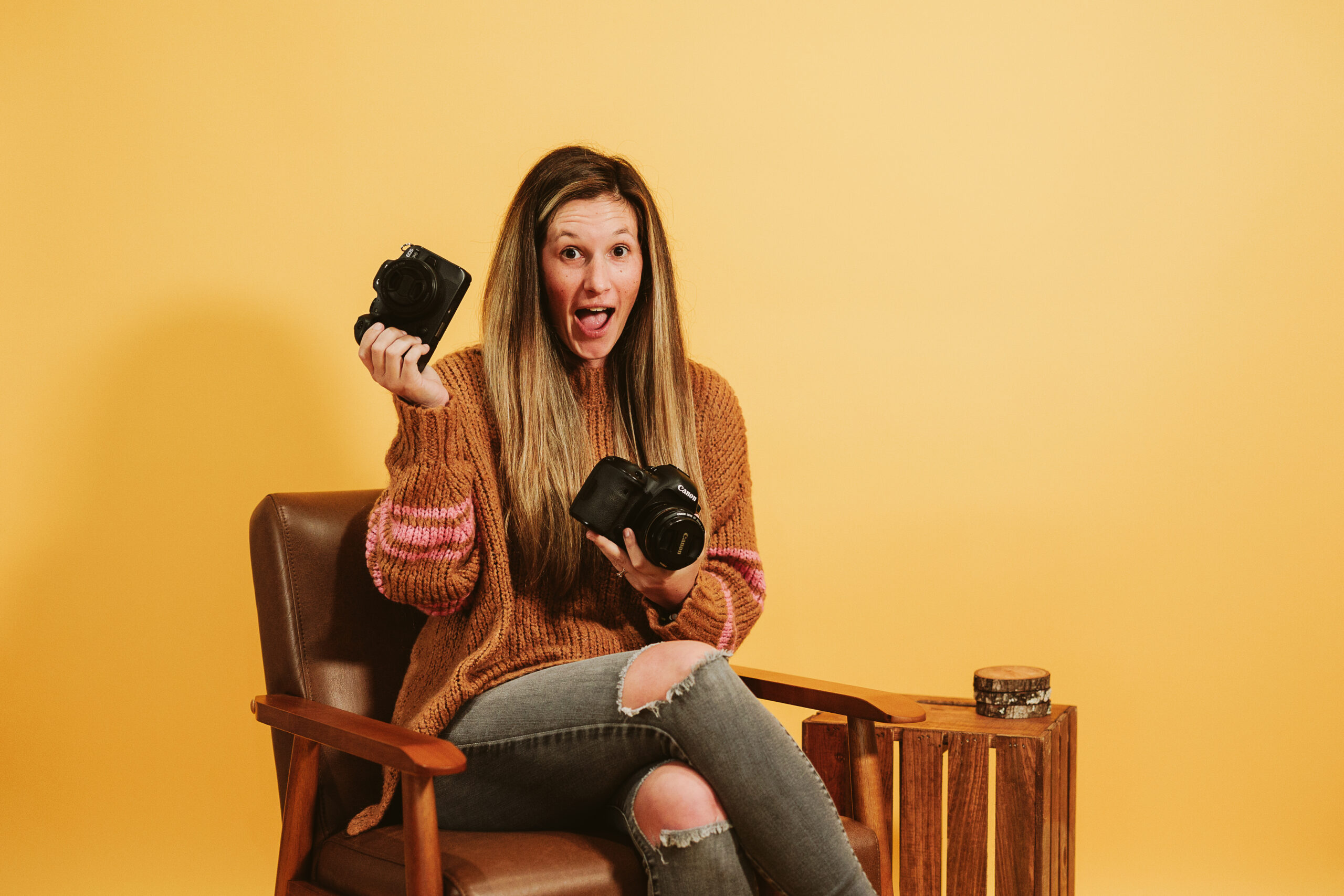As professional photographers, we’ve been shooting with DSLRs for a long time. Even through all of the mirrorless hype, we stayed pretty persistent with our trusty Canon 5D Mark IV. However, after losing a camera to Hurricane Ida in 2021, we talked a bit and finally decided to take the plunge and buy ourselves a Canon EOS R6. After shooting on it for a few months, we learned that switching to mirrorless wasn’t as scary as we thought it would be.
For a long time, our go-to camera was the 5D Mark IV. It’s the perfect camera for what we do and has a ton of features we love. However, the R6 came with all of those features plus more!
Features We Already Loved
Like the 5D, the R6 is a full-frame camera, which is an essential feature to have for what we do. A bigger picture equals more room to compose, and more detail to all of our shots. And it helps for editing too! Since we’re working with a wider composition, we have more room to straighten our shots, and the added detail reduces quality loss for when we need to crop in a little bit.
Improvise, Overcome, Adapt
One reason you might be debating the switch is because… well, let’s face it: new lenses are expensive. Luckily, we found ourselves an inexpensive adapter that is perfect for putting our old lenses on the R6. We’ve managed to get one or two lenses that are compatible with the R6, but thanks to the adapter, there’s no rush to replace all of our lenses.
More Batteries
And speaking of making fewer purchases, batteries are not cheap! Every photographer knows that you need to have plenty of batteries, just in case you need a backup. Thankfully, we didn’t need to buy a bunch of new batteries when we bought the R6! It uses the exact same type as the 5D and as an added bonus, the R6 comes with its own battery to add to your collection!
Silent Shooting
We shoot a LOT of weddings and it’s important for us to stay stealthy during ceremonies. That’s why we relied on the silent shooting mode on the 5D Mark IV. With the R6, that mode is still available to us, along with the ability to shoot even faster while silenced. But that’s not the only feature the R6 has over the 5D!
New Features We Love
I mean come on… who doesn’t love new stuff? With the R6 being released four years after the 5D Mark IV, this thing is bound to be chock full of new goodies.
Lighter Load
Starting simple, the R6 is a lighter hold than the 5D. When it comes to buying new cameras, weight isn’t really what you think about before you switch. But when you’re carrying around a bulky DSLR for a shoot, a lighter camera feels like a gift! Just trust us when we say… this is definitely a feature.
Upgraded Viewfinder
There are two types of photographers: those who prefer the versatility of shooting in live view and those who like the traditional feel of capturing photos from the viewfinder. If you fall into the traditional category, you just got an upgrade. Without the need for a mirror, the viewfinder now includes a fully digital screen that mimics the screen on the back of your camera. Now you can see the exposure of your shots in real-time while looking through the viewfinder! Welcome to the future!
You’re Gonna Flip!
If you do prefer live view, don’t worry! There’s something for you too! This next feature isn’t necessarily new, but it’s new to us! Unlike the 5D Mark IV, the R6 comes equipped with an adjustable flip-out screen. This gives us the ability to easily shoot from different angles and can be useful if we’re feeling a bit more experimental. It comes in handy when shooting video as well!
MUCH Better Auto-Focus
The R6 has a lot of technical features that trump the 5D. Auto-focus is no exception. The 5D Mark IV has 61 points where it can detect focus on your subject. This may seem like a lot but not when compared what the R6 is capable of. Canon has equipped the R6 with over a thousand points of focus so you’ll never miss a shot. And to make it easier for ourselves, we’ve programed two auto-focus buttons on the back of our camera. One that allows us to focus on whatever point we’ve selected, and one that lets the camera auto-detect our subject. Both of these are incredibly useful in plenty of circumstances. And because the touch screen is more reactive than the 5D’s, selecting an auto-focus point is much smoother!
There is plenty more to talk about when it comes to switching to mirrorless, but we think we’ve made our point! Although it took some time to decide, buying a mirrorless camera is something we certainly don’t regret!









